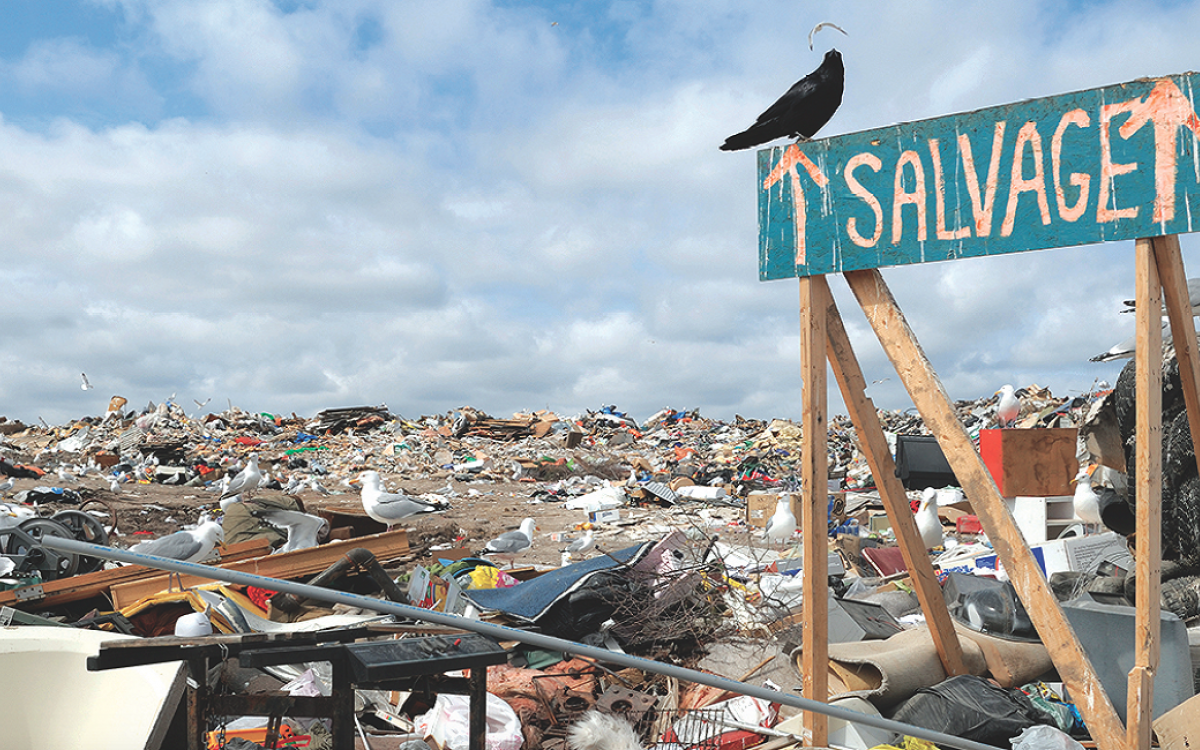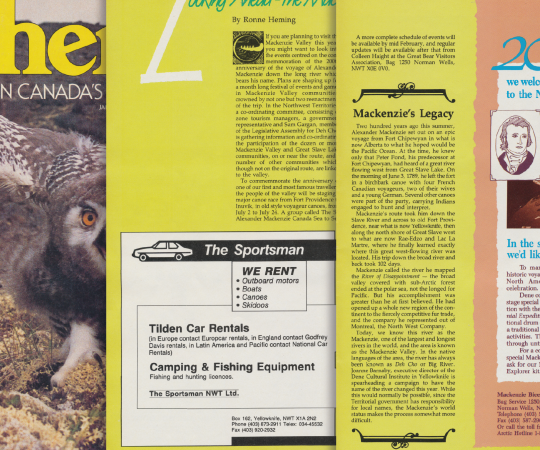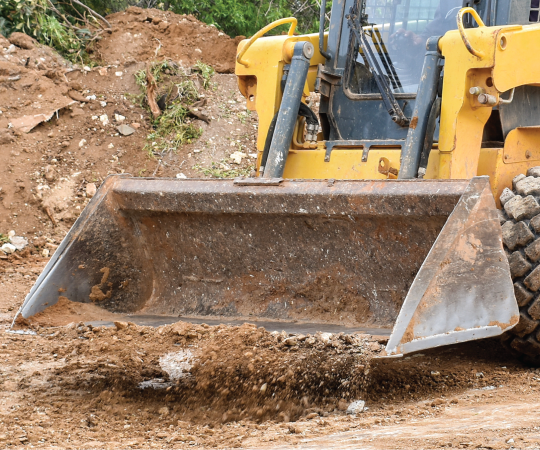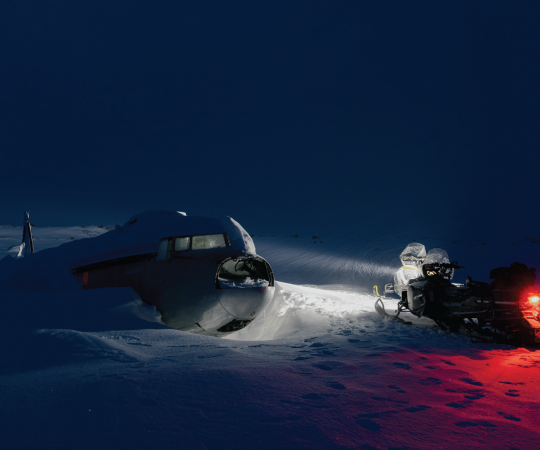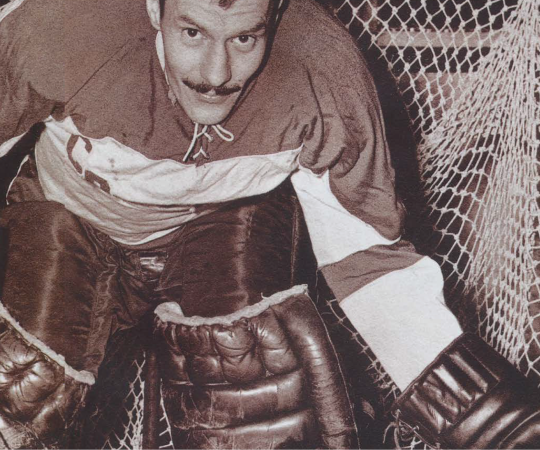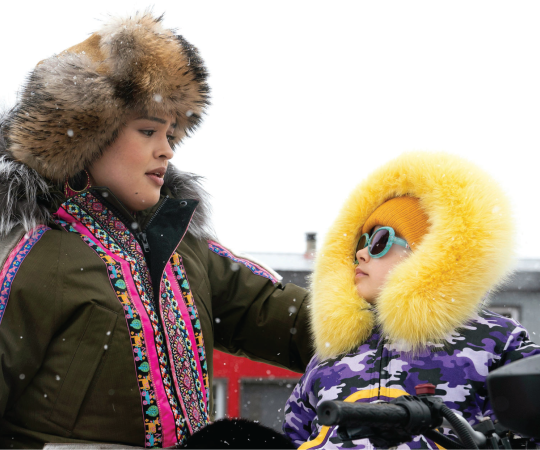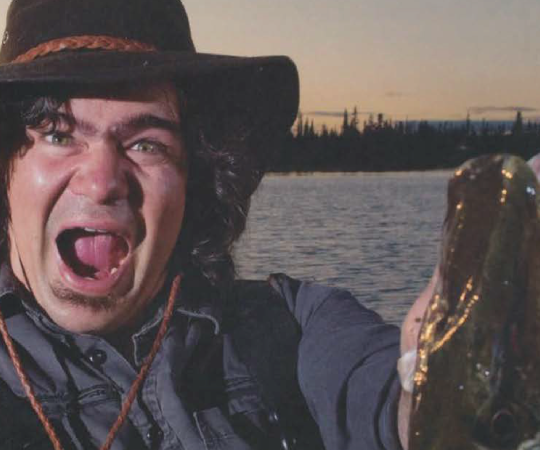A white limousine pulls up. Inside, the passengers pour champagne. But outside, a raven is picking through a bag of trash. They’re parked at the Yellowknife solid waste facility to toast the local premiere of Salvage, a movie all about our garbage.
“It looked like we were going to prom,” says Amy Elliott, the filmmaker behind the documentary. Originally from New York, Elliott came to Yellowknife annually for six years, starting in 2009, to work on her film. Before her first trip, she’d never really heard of Yellowknife. She knew she wanted to make a movie about trash, but finding an open dump where she could go and explore the topic was tricky. Most dumps these days have closed themselves off to the public for liability reasons.
Then she stumbled across “Tales From the Dump,” the Yellowknifer newspaper column Walt Humphries has been writing for over two decades. “I realized that if there was a community out there that had a weekly column in the newspaper dedicated to its town dump, I should probably go check it out,” she says.
It might not be in the tourist guide books, but Yellowknife’s solid waste facility is a hotspot for locals. It’s not uncommon to see people picking through the trash, or making the rounds after a morning of yard sales when the remnants end up dumped at the dump. A common response after complimenting someone’s piece of art or end table is to hear them proudly say, “Yeah, I got that at YKEA,” locals' nickname for the salvage area.
The Yellowknife dump, like most northern dumps, still has an open salvage area where people can pick through to find useful items. Cars drive in, past the areas that are out-of-bounds, and unload at the salvage area (a space off to the side). From time to time, this area is bulldozed into a pile, but it’s an honour system as to what gets left there and what gets thrown away. There’s no fee to access the salvage area either, and in 2017, over 8,800 vehicles drove in.
“To me it was like a wonderland,” says Elliott. “Anything you could imagine was at the dump. People just drove off in vehicles that were still working, from the smallest things to the biggest things.” For a lot of salvagers, it’s social, it’s entertainment, it’s the thing they do on a Saturday afternoon. Elliott noticed that right around the time she clocked a pair of gentlemen setting up their lawn chairs. “They joke that it’s their office, and they sit there and talk and wait for the good stuff to come in every day.”
The people she met in the dump, the vast majority, didn’t need to be digging through garbage. “They weren’t there out of necessity or poverty. They all had different things that they focused on,” says Elliott. “But the overarching thing they all had in common was it was almost a matter of conscience. The wastefulness bothered them.”

Across the world, our relationship to trash is changing. We’re literally running out of space to hide it, to bury it, to put it away from ourselves. The North is no exception. Like a lot of dumps, Yellowknife’s is filling up. The landfill began accepting waste in 1974 and has an estimated five to eight years worth of space left, if current disposal rates don’t change. Could salvaging be the key?
In 2017, 24,289 tonnes of waste made it to the solid waste facility, or over 1,100 kilograms per capita—more than 400 kg above the Canadian average, according to Statistics Canada. At the same time, the amount of waste diverted by programs like composting and recycling was less than other parts of the country. In 2017, Yellowknife kept 3,549 tonnes out of the landfill, or about 170 kg per capita—80 kg per person under national averages.
Although data isn’t readily available about how much waste was kept out of the stream by salvagers, the salvaging mindset is a way of looking at trash differently.
One hundred years ago, our relationship to garbage was very different. There were industries around buying people’s rags, bones, and ashes. Resources were seen as far less disposable than they are today. Fast fashion, forced obsolescence, and rapid consumption has meant that in many cases, it’s now cheaper and easier to replace than repair. But that isn’t the only change. It wasn’t until sanitary landfills—with a focus on burying waste, out-of-sight and out-of-mind—became the norm that people’s attitudes towards their trash began to change. What once was useful material suddenly became dirty refuse that we shouldn't touch once bagged.
This concept doesn’t work in the North.
“We’re the end of the road, not as much stuff gets taken out,” says Walt Humphries. He’s been a garbage regular since he moved to Yellowknife in the 1970s. Humphries describes people’s quests to scoop up the coolest treasures and most useful items as a sport, a hobby and a competition all in one. “I can’t think of anything I wouldn’t salvage at the dump if it was in reasonably good shape.”
The dump, he says, is seasonal. Harvest time is the spring and fall when people move out of town. The cost of shipping south everything they own can be prohibitive, so instead of a moving truck items end up at the dump.
“Someone’s downsizing or leaving town and they’re throwing out perfectly good stuff,” Humphries says. “One day I went out there, and someone was probably leaving town, and all their kitchen appliances they’d laid out in a row. They were all in good shape and people were walking down the line saying, ‘I’ve already got a microwave but, gee, that’s a pretty good blender.’”
(It’s gotten so out of hand that in his own home the Humphries now have take-a-coffee-mug, leave-a- coffee-mug rule for trips to the dump.)
By the same token, the further north you go, the harder it is to find materials. This has kept the value in our trash long after that value was forgotten in the south.
“I think the whole idea of salvage is really a big part of being in a remote northern location,” says Sheila Bassi-Kellett. “In my time in Tulít’a there was one store. So if it’s not there, what are you going to do if there’s a part you need to make something operational? You’re going to be ingenious and innovative.”
By day, Bassi-Kellett is Yellowknife’s city administrator. But under cover of a mid-Saturday afternoon, she’s a salvager.
“I don’t like overhead lights and I have nine lamps, all from the dump. My sofa is salvaged from the dump,” she says. “There is stuff that’s in my office right now that’s not in the dump.”
It’s more than a hobby; it’s a way to keep the city functioning. Keeping things out of the dump is a necessary part of waste management, one that will be needed more and more as the garbage strategy of not-in-my-backyard shuts down.

For years, countries like China have been purchasing recyclables and accepting waste. Even within North America, it’s common practice for big cities to ship their refuse to smaller locations. But those dumps are filling up. Since 2018, China has banned 24 types of recyclable materials. Meaning no one is buying what northern residents are carefully sorting and eventually selling. This led to revelations last July that the city of Yellowknife was emptying its community recycling bins into the landfill. “There was that one dreadful picture of recycling being dumped at the solid waste site, and that was because we had reached the pinnacle for the amount we could store before we could find a buyer for it,” says Bassi-Kellett.
Before 2018, the city received about $65 per tonne of recyclables sold (mainly to brokers in Alberta who would then sell it on to overseas buyers). According to CBC, by last summer that amount had dropped to just $10 per tonne. Today, Bassi-Kellett paints an even bleaker picture.
“We’re at the point now where we would have to pay,” she says. “For us it’s very challenging right now to find a buyer for our recyclables. And the grim reality is the more things sit around, the more chance there is of contamination.”
The city is still searching for alternatives. But even if it does find buyers, recycling isn’t the green goddess of neutrality Captain Planet has led most of us to believe. Some items, like metal and glass, can be reformed and reused repeatedly. Plastic, however, degrades each time it goes through the system. A yogurt cup won’t necessarily become another yogurt cup (especially if it’s in mixed batches from manufacturers who use slightly different chemical compositions). Instead, it’ll become industrial plastic, and after a few times round the system, have to be buried or burned.
“I used to feel, great, I had that 750 ml bottle of Coke. I can throw that in the recycling bin and it’s going to come back to me as a fleece, a jacket at some point. It isn’t happening that way anymore,” says Bassi-Kellett. “We need to start to understand as consumers what happens to those recycled products. We need to be a little bit more affirming when it comes to retailers to say, ‘You know what, I would really prefer things came in glass or not in disposable single-use plastics or whatever it is.’ That we set the bar for some of this work.”
One solution is salvage, or at the very least, the salvage mindset that implores people to think about what they’re consuming and what they’re throwing out. That’s a change in civic policy. The city of Yellowknife has had an on-again/off-again love affair with salvaging over the years, by turns turning a blind eye or restricting access. Like many other municipalities, the space remains a liability concern. Dumps can be dangerous.“There’s been this war between the city and people who salvage,” says Humphries. “Several times they said we’re going to close the dump down, but there was always too much of a backlash about that.”
For now, there are no plans to remove salvaging at the Yellowknife dump. Scavenging is an economic priority, says Bassi- Kellett.
“Right now, our official position is that we’re supportive of scavenging,” she says. “I think it has to do not just with a personal philosophy but genuinely right now, that if we need to expand the size of our solid waste facility to accommodate the garbage, that costs tax payers. So we want to avoid that.”
They’re not the only ones. Alberta’s Foothills Regional Landfill and Resources Recovery Centre accepts waste from Foothills County, High River, Okotoks, Black Diamond, Nanton, and Turner Valley. It also actively encourages salvaging. The town leased a space next to its landfill to the Foothills Salvage and Recycling Society, a not-for-profit that maintains materials brought in by the community, instead of throwing them away. These items are sold back to the public, with profits going to the Family Resource Centre in Okotoks. The society brings in around $300,000 a year, and in 2013 reported that it had diverted nearly 500 tonnes of material from the landfill—everything from clothing, wood and metal to electronics and books.
Yellowknife’s 2018 Strategic Waste Management plan recommends following this example, and potentially relocating its salvage area to outside Yellowknife’s dump, near the Habitat for Humanity’s ReStore (a volunteer program that already does a similar thing, re-selling building materials and furniture, with proceeds going to build Habitat’s homes).
Having something more established than an open-air pad, and more regulated than a free-for-all, could address the fact that many things at the current site that could be salvaged aren’t, after the weather and the ravens have their way with them.

While Humphries says he’d like to see dumps everywhere open to the public, Elliott isn’t so sure that’s practical.
“You can’t put the toothpaste back in the tube,” she says. “We’re at a crisis point on our planet where we all need to start thinking about resources and how to preserve them, as opposed to just expending more fossil fuels to make more. I think it’s hard to apply that in the south or cities where [dumps have] already been closed down for liability reasons. I just don’t think it’s realistic that people are going to be allowed to start going into dumps and getting stuff.”
Whether a logistic concern, or a mentality of convincing people there’s good stuff to be had (albeit if you need to hose the raven poop off it), once dumps are shut down, it’s hard to go back. Even in Yellowknife and other northern communities, it’s changing. With more and more access to goods online that once would be almost inaccessible, many people are choosing the convenience of ordering from Amazon over hunting for treasure at the dump.
“The world is smaller. The south has come north, and I think it’s really hard to ask people to wait and do this when it’s quicker and easier to just buy something new that can take two seconds online,” says Elliott.
A lot of it comes down to rethinking what we think of as garbage. Elliott remembers her grandmother’s dining room table, which went from being a treasured site of family meals to trash overnight after her grandmother died.
“It was garbage because she didn’t need it. She was dead and no one wanted it, but it was still a perfectly good table,” she says. “That idea just kind of stuck with me. That these things could be such an important part of life and then, just in the blink of an eye, could also be garbage was just really strange to me.”
Her film, all about Yellowknife’s salvage culture, has been making the rounds of film festivals at home and abroad over the last year. Next, it will screen at the Explorers Club in New York, before making its way into schools and libraries.
Wherever it’s shown, she says there’s been a reaction.
“It’s been interesting to see because it is a very local film in a lot of ways. It really is very much about Yellowknife and about the Yellowknife dump and a lot of people don’t even know where Yellowknife is. But it obviously is touching a more universal nerve,” she says. “Clearly it resonates with people, this idea of trying to think about resources differently. We have to rethink what is garbage.”

